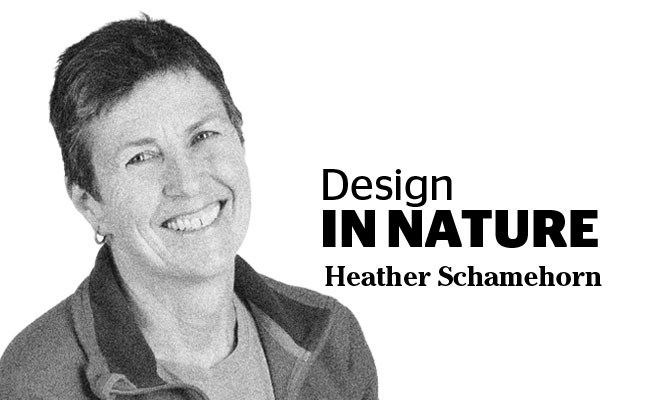The buzz word around the North Shore these days is gridlock.
When I am trying to manoeuvre on foot down my street and am forced to wait for a steady stream of traffic whizzing down my usually quiet residential street before I can cross, I know there must be a crash on the bridge.
When I leave the sidewalks of North Vancouver city behind and cross into the district, it is a challenge to be able to go even one block without having to walk on the street.
On garbage day, it is impossible to even go half a block on the public boulevard area.
People plant all manner of things on the boulevard, including hedges from their doors to the curb along the sidewalk. For what reason I cannot even imagine. All it really achieves is creating a workload to maintain the walkway, and forces people to either step over, or walk through the bushes, or walk on the street.
Small boxwood paired with a chafer beetle damaged lawn is a favourite choice, and the combination is one of the most boring, useless and hazardous landscapes I can think of after the “rock pile” that is becoming popular to foil chafer beetles.
Some inconsiderate residents pile their garbage and recycling on whatever small space that may be left leaving no space at all for walking.
Even brand-new houses have pedestrian impeding landscapes, despite bylaws in place, quoted on the District of North Vancouver website as: “You can plant a bush, shrub, grass, or ground cover, as long as it:
- Is less than 0.9 metres high when fully grown.
- Is at least 1.5 metres from the edge of the roadway or sidewalk when fully grown.
- Doesn’t affect pedestrian access, visibility, or traffic safety.”
There seems to be no interest in remedying the situation at the district hall, and they will only enforce the bylaw if there are complaints.
So, back to gridlock.
I wonder if anyone stops to think about the fact that making it easier for people to walk around our city might result in a bit less traffic?
Children cannot even walk to school safely, hence a gridlock of cars idling outside local schools each morning.
In perusing the Livable Cities website, I noticed the number two rule states: “The city should make walking a joy – safe, comfortable, interesting.
The quality of sidewalks, parks, and plazas – life ‘between’ buildings – is one of the ultimate signs of a healthy city.
We recommend measures such as buffering pedestrians from traffic, reducing the speed of traffic on residential streets, and widening sidewalks.”
Since having an aging parent in a wheelchair, and an unwell dog who finishes up his walks in a chariot I have become a lot more conscious of mobility issues as I move around.
I hope that in the upcoming discussions on traffic problems, accessibility for pedestrians will be addressed.
Until there is more education about sharing the public space we care for, we may be contributing in some way to the traffic problems.
And please reconsider if you feel inspired to block off your boulevard area with rocks, hedges or piles of recycling and garbage.
Heather Schamehorn is a certified residential landscape designer, educator, sustainability advocate and acupressure therapist. Contact via perennialpleasures.ca



